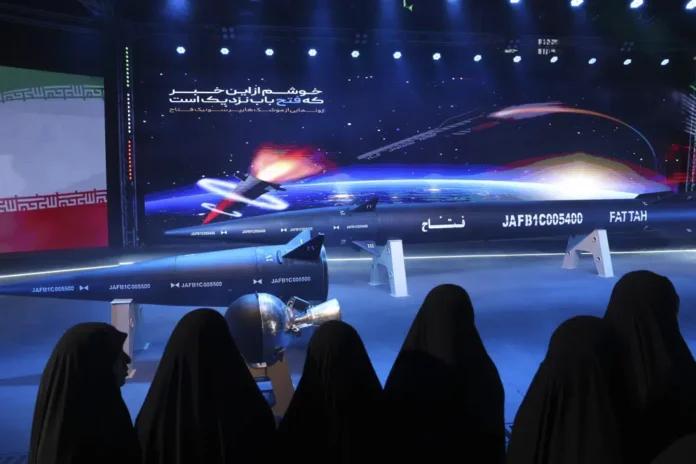DUBAI, United Arab Emirates (AP) — Iran made a bold claim by announcing it has developed a hypersonic missile capable of reaching speeds 15 times the speed of sound. The unveiling adds a powerful weapon to Iran’s arsenal, as tensions with the United States escalate over Tehran’s nuclear program.
Dubbed “Fath” or “Fateh” in Persian, the introduction of the new missile coincided with Iran’s announcement of the reopening of diplomatic posts in Saudi Arabia, a sign of possible detente between the two countries after years of conflict.
In a carefully choreographed segment on Iran’s state television, President Ibrahim Raisi expressed confidence in the country’s resilience, emphasizing its role in achieving lasting peace and regional stability. General Amir Ali Hajizadeh, head of the IRGC’s aerospace program, unveiled a model of the missile, emphasizing its impressive range of up to 1,400 kilometers (870 miles).
The significance of this missile lies in its ability to challenge existing defense systems. While Iran’s ballistic missile arsenal is already a threat, Fatah’s maneuverability could complicate deterrence efforts. Showing off a movable nozzle during the presentation, Iran hinted at the missile’s ability to change its flight path, making it increasingly difficult to intercept.
Although Iranian officials did not release footage of the successful launch and attack, Hajizadeh confirmed the ground test of the missile’s engine. It is important to note that developing a missile for ground testing is significantly different from successfully deploying it in actual combat scenarios.
Hypersonic weapons, which travel at speeds in excess of Mach 5, pose severe challenges to existing missile defense systems due to their high speed and maneuverability. Iran claims the Fatah can reach Mach 15, which is 15 times the speed of sound. In particular, China and the US are believed to be pursuing similar hypersonic technologies, with Russia already claiming to have deployed them in Ukraine.
However, speed and maneuverability alone do not guarantee successful target strikes, as demonstrated by Ukraine’s downing of a Russian hypersonic Kunzal missile using a Patriot battery. The countries of the Gulf region, which are closely aligned with the United States, rely heavily on the Patriot missile system for defense, while Israel, Iran’s main rival in the Middle East, boasts a strong air defense system.
The announcement by Iran coincides with US Secretary of State Anthony Blanken’s upcoming visit to Saudi Arabia, adding to the geopolitical context surrounding the missile unveiling.
As tensions remain, Iran’s launch of a hypersonic missile serves to demonstrate its regional power and send a message to adversaries that it has advanced weapons capable of defeating existing defense systems. Such technological developments introduce new variables into the already complex equation of regional dynamics and international relations.






